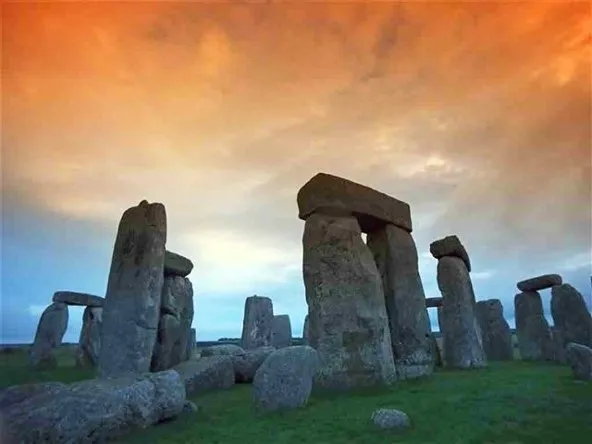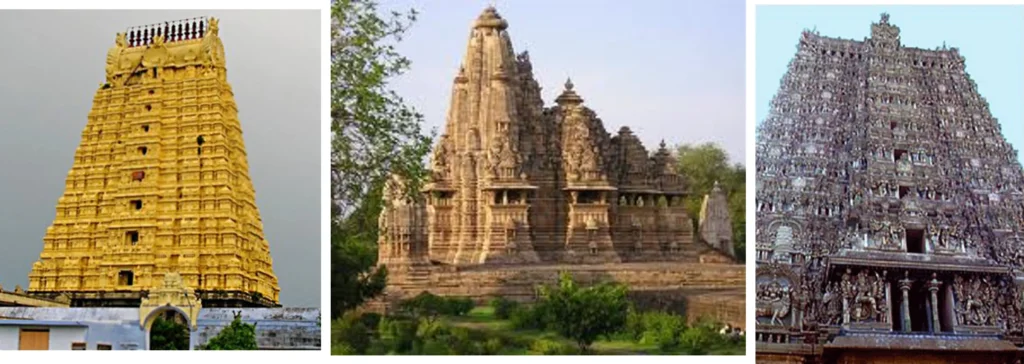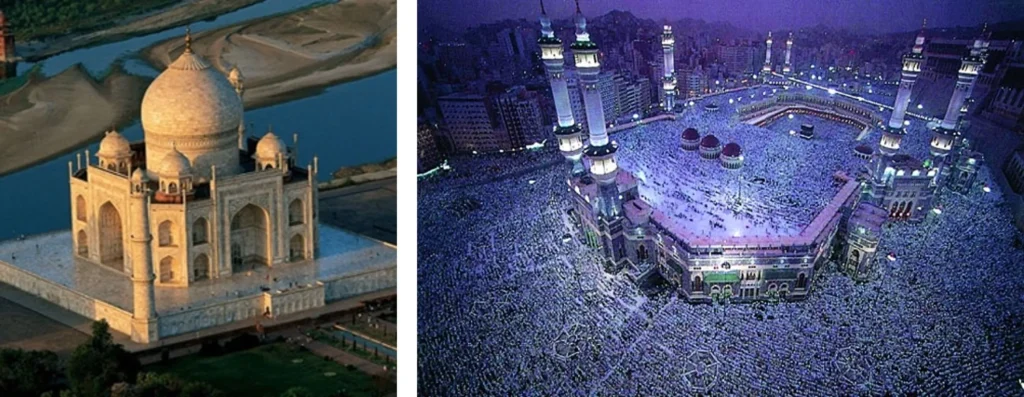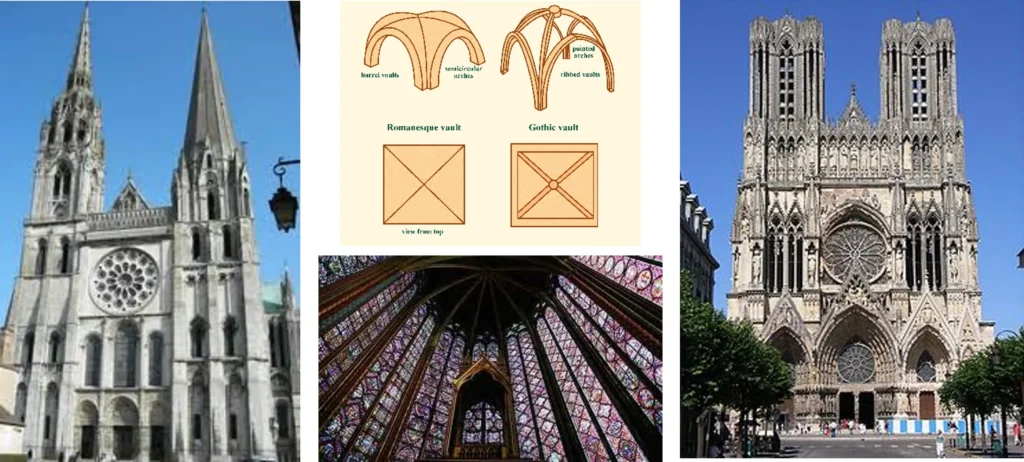If you want to know about roman architecture or indus valley civilization or hindu temple architecture, please click the link.
Historic architecture refers to the design and construction of buildings and structures from specific periods in the past. This encompasses a wide range of styles, from ancient structures such as pyramids and temples, to medieval castles and cathedrals, to colonial homes and public buildings, to modern skyscrapers and other structures.
- Architecture which followed a continuous evolutionary course is known as “HISTORIC ARCHITECTURE” Such as Egyptian architecture or architecture style. The style refers to the method of construction practiced in a country at a period, depending on the availability of materials, the religious conditions, and their traditions.
- By studying history of architecture, we not only study history of civilizations, but, since architecture is a coherent chain of events, styles, tendencies, beliefs and techniques, we also gain a direct understanding of how and why architecture is made today, and clues to how architecture can be tomorrow.
- Need
- Importance
- Joy
- In the cultural evolution of mankind, we come across mainly three stages such as ‘Stone’, ‘Bronze’ and ‘Iron Ages’ according to the use of materials and weapons of that times. The ages have different periods in different parts of the world.
- The earliest forms of dwellings of ‘savage’ hunter were rock- caves later on he learnt to build huts of reeds and tents from bark, skin of animals.
- The means of living for savage people were hunting, fishing and collection of food.
- In the cultural evolution of mankind, we come across mainly three stages such as ‘Stone’, ‘Bronze’ and ‘Iron Ages’ according to the use of materials and weapons of that times. The ages have different periods in different parts of the world.
- The earliest forms of dwellings of ‘savage’ hunter were rock- caves later on he learnt to build huts of reeds and tents from bark, skin of animals.
- The means of living for savage people were hunting, fishing and collection of food.

- Once the problem shelter and food had been successively solved, the next outstanding works taken were of sacred nature, the places of worship or tombs.


- ‘Stone henge’ – The huge stones are arranged in two concentric circles, the outer one with 33m in diameter while the inner with 25m. The stone – henge is the corruption of stanhangest , i.e. stone horse and built for religious purpose. Some have ‘deciphered’ stone- henge as an ancient calenderic device to keep track of solar and lunar cycles.

1) Development of historic architecture
The development of historic architecture has been shaped by various cultural, social, economic, and technological factors throughout human history.
Some key movements and styles include:
- Ancient architecture, such as Egyptian pyramids and Greek temples.
- Gothic architecture, characterized by pointed arches, ribbed vaults, and flying buttresses.
- Renaissance architecture, which marked a revival of classical forms and motifs.
- Baroque architecture, characterized by grandeur, drama, and ornamentation.
- Neoclassical architecture, inspired by the classical forms of ancient Greece and Rome.
- Modern architecture, marked by innovative forms, materials, and technology.
Each style reflects the values, beliefs, and priorities of the time and place in which it was created, and the development of historic architecture continues to be influenced by changing cultural, social, and technological factors.
(3000 B.C to the present day)
- The development of historic architecture is a record of continuation of evolution, beginning with the Egyptian architecture which is characterized by massive walls and strong closely spaced columns carrying beams to support the flat roof. This style is known as “Trabeated style”.
- The ancient Egyptians were quite obsessed with after life. The mystery of death was the governing idea of Egyptian culture. Hence dead bodies were mummified and huge pyramids were erected by the pharaohs to secure immortality.

- The Assyrians and Persians were warriors, huntsmen. They built towering structures known as Ziggurats. Babylonians constructed brick corbelled arches, barrel vaults and sometimes domes. The world-famous Hanging Gardens and Tower of Babel are outstanding works of Babylonians.

- The Greeks adopted the trabeated style. Their love for national games and festival gave to the construction of stadia and theatres. The three columns (Doric, Ionians and Corinthian) are known as “Orders of Architecture”.

- The Romans adopted ‘arcuated’ style i.e., they used arches, vaults and domes for their construction. Roman added Composite and Tuscan orders to the three orders of Greek thus making five orders of architecture. Their love for justice is also evident in the numerous “Basilicas” or “Courts of Justice”.

- In India, there was a great rise in Buddhist architecture (300B.C onward) where we come across stupas, stambas, viharas, followed by Jaina Architecture and finally Hindu architecture, which is confined to the construction of temples, with numerous mouldings, carvings, relief work based on Indian mythology.

- Hindus mainly adopted the trabeated style of architecture. The arch was deliberately omitted since ‘the arch never sleeps’ a simple but poetic excuse accepted by the Hindu builders to avoid the use of arch. Hence the style consisting of the reposeful horizontal layers of stones was the main structural form adopted by them throughout the construction of temple complexes.

- In Muslim architecture, (700 A.D. onward), we see mainly tombs, mosques, madrasa, palaces etc. Pointed arches are commonly used in this style.

- On Western side, now there was spread of Christianity, which had its birth at Judaea. It spread from Rome to other countries. The Christians mainly constructed churches of Basilican type. Later on, the capital was shifted to Byzantine from Rome where a new Byzantine style was evolved, where we come across the construction of domes.

- In Romanesque architecture cathedrals, churches, monasteries and castles were constructed. The religious enthusiasm rise to Gothic style.
- Then in Gothic architecture pointed arches are used in construction of churches. The walls were no longer required to support the structure, so they were replaced by huge windows filled with stained glass.

- Next came the Renaissance style, the great revival of old Roman architecture. Pointed arches were replaced by semicircular arches, vaults etc.

- In the 19th century industrial revolution took place, population increased enormously. Architecture then did not proceed on its old tradition, religion which was confined to temples, mansions, palaces etc.
- A new architecture so called modern architecture evolved in 19th century to meet the requirements of the common masses. So, buildings of great varieties came into being, such as municipalities, libraries, clubs, shopping centers, restaurants, hospitals, technical schools, colleges, markets, factories, bus terminals, airports, skyscrapers etc.


- It made rapid progress due to the modern material like steel, concrete, glass, plastics etc. aided by modern techniques. This architecture of machine age is increasingly becoming more and more complex throughout the whole world.

Historic architecture is an important part of the built environment and provides valuable insight into the ways in which people have lived and built throughout human history.